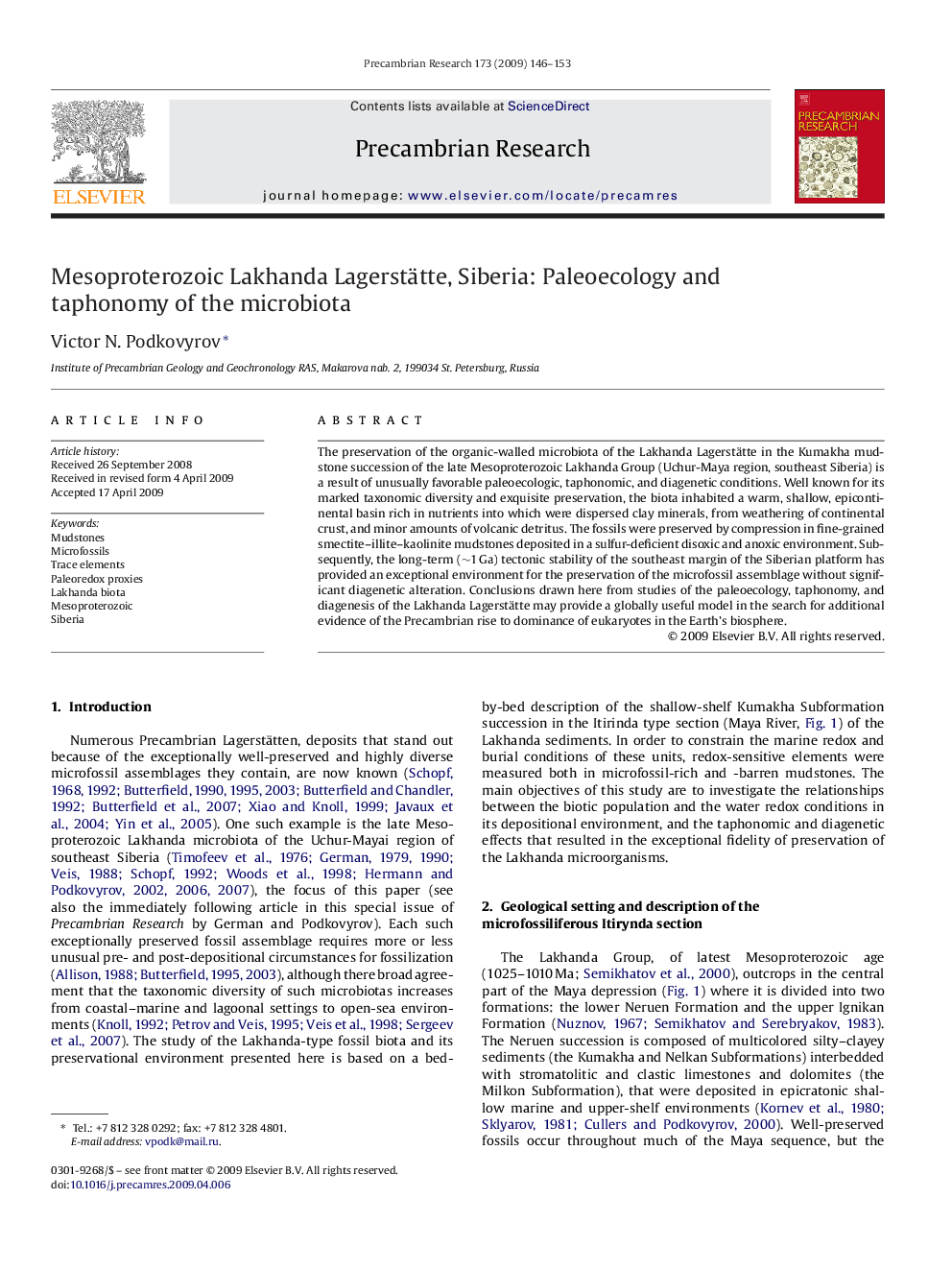| Article ID | Journal | Published Year | Pages | File Type |
|---|---|---|---|---|
| 4724031 | Precambrian Research | 2009 | 8 Pages |
The preservation of the organic-walled microbiota of the Lakhanda Lagerstätte in the Kumakha mudstone succession of the late Mesoproterozoic Lakhanda Group (Uchur-Maya region, southeast Siberia) is a result of unusually favorable paleoecologic, taphonomic, and diagenetic conditions. Well known for its marked taxonomic diversity and exquisite preservation, the biota inhabited a warm, shallow, epicontinental basin rich in nutrients into which were dispersed clay minerals, from weathering of continental crust, and minor amounts of volcanic detritus. The fossils were preserved by compression in fine-grained smectite–illite–kaolinite mudstones deposited in a sulfur-deficient disoxic and anoxic environment. Subsequently, the long-term (∼1 Ga) tectonic stability of the southeast margin of the Siberian platform has provided an exceptional environment for the preservation of the microfossil assemblage without significant diagenetic alteration. Conclusions drawn here from studies of the paleoecology, taphonomy, and diagenesis of the Lakhanda Lagerstätte may provide a globally useful model in the search for additional evidence of the Precambrian rise to dominance of eukaryotes in the Earth's biosphere.
